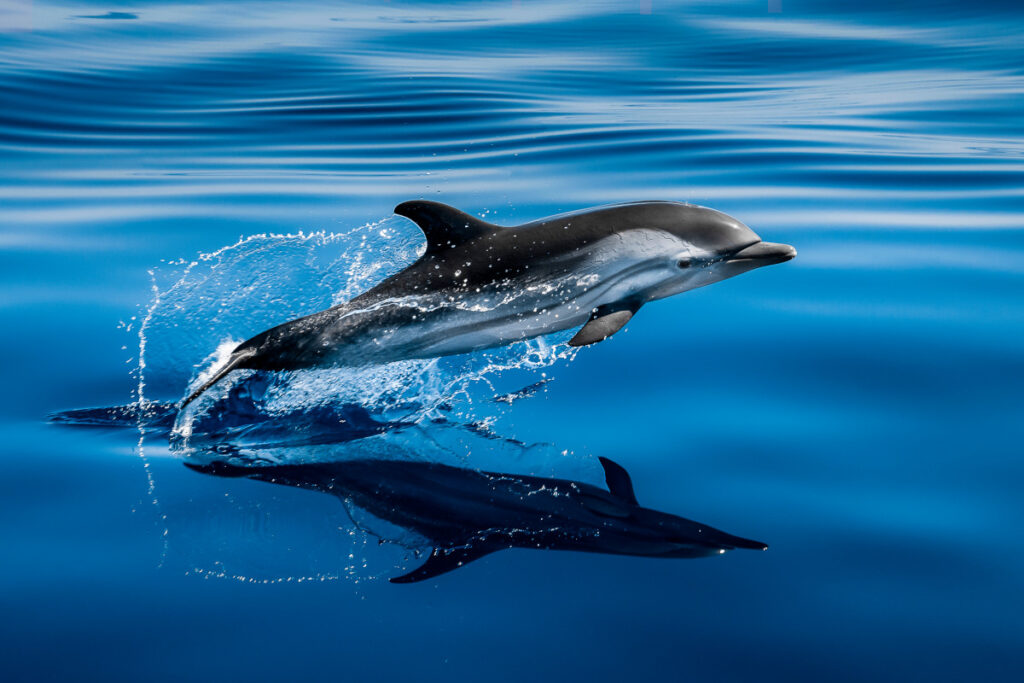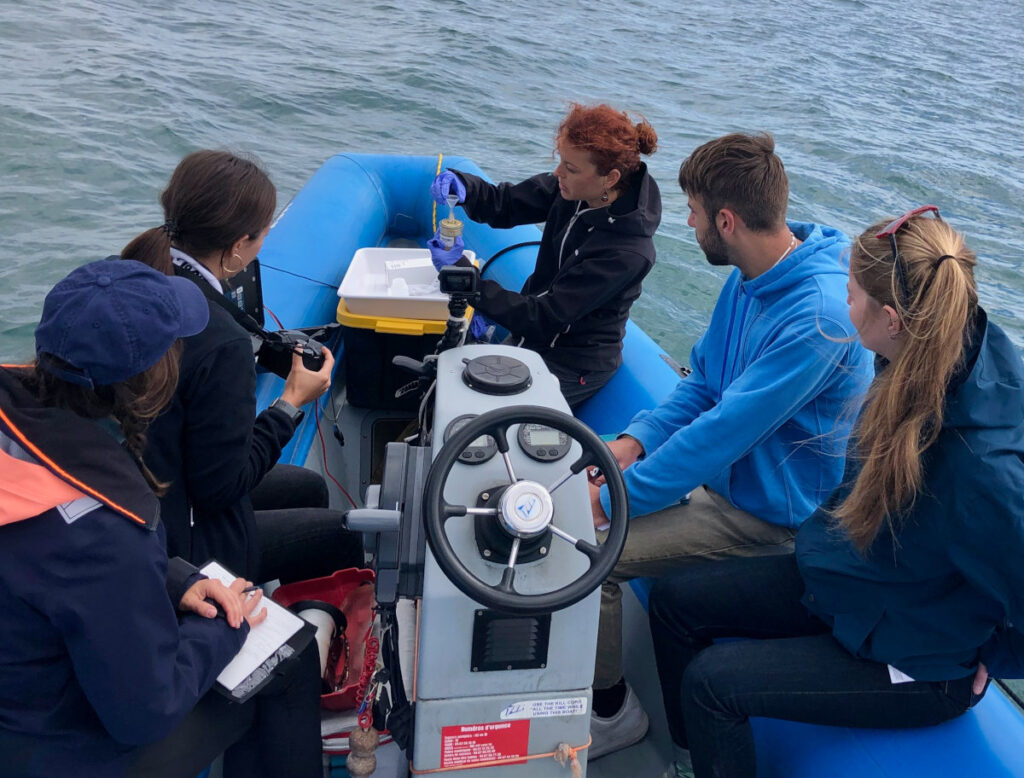A conference on marine biodiversity in the Mediterranean
Join us this Thursday, June 8, World Ocean Day, for the presentation of the BioDivMed 2023 scientific mission. This conference on marine biodiversity in the Mediterranean will be presented at Planet Ocean in Montpellier by David Mouillot, marine biology researcher at the MARBEC laboratory at the University of Montpellier, in the presence of Philippe Augé, President of the University of Montpellier, Alicia Dalongeville and Benjamin Allégrini (SpyGen), Pierre Boissery (Agence de l'Eau) and sailors, and Anthony Maire (EDF). Far from being a simple presentation of techniques and results, this conference will be structured around five short presentations, each of which will be followed by an exchange with the audience.

About BioDivMed 2023
The aim of the BioDivMed Mission? Determine and better understand the occurrences of fish, crustacean and marine mammal species, and then establish a true fine-scale cartography of marine biodiversity. To achieve this, environmental DNA (eDNA) technology will be used to enable a standardized inventory of the Mediterranean to be carried out in a synchronized fashion by four sampling campaigns: over four months, more than 700 eDNA filtrations will be carried out in marine and brackish waters stretching over more than 2,000 kilometers.
eDNA metabarcoding is a new technology that makes it possible to inventory aquatic biodiversity via the DNA traces left by species in their environment. The filtration and analysis of eDNA enables the detection of numerous species, and therefore has great potential for developing a new generation of indicators of the state of health of marine waters under human impact or protection measures. Never before has such a synchronized and standardized inventory of marine biodiversity been undertaken in France.
This unprecedented effort is the result of the collaboration and synergy of four oceanographic campaigns planned this year between May and August 2023:
- PISCIS, a campaign to monitor the health of Posidonia meadows and coralligenous beds, implemented by Andromède océanologie on behalf of the French Water Agency;
- PIAF, the study of marine life on loose and sandy substrates, is coordinated by the University of Montpellier;
- TheOceanoScientific Expedition, which will travel along the Mediterranean coast from the Italian border to the Spanish border to collect eDNA samples; to inform and raise awareness of the issues surrounding the ocean and its biodiversity by carrying out the Sea & Trades Tour of the Exemplary Mediterranean Facade - Famex 2030 program;
- The Pelagos expedition of the We are Méditerranée association, whose ambition is to study marine life in the pelagic zone, in particular that of the Pelagos sanctuary, a marine protected area (Aspim) designed to protect marine mammals in a triangle comprising the French and Italian continents and including Corsica at its apex.
Thanks to this cooperation, the first mapping of marine biodiversity (10 kilometer resolution) will be made available to all coastal and marine stakeholders and managers on the Medtrix and Vigilife Maps mapping platforms (the World Observatory of Living Things, of which the University of Montpellier and SpyGen are two founding members) in 2024.
Key dates in the operation
- April 27, 2023: launch of the PIAF program from Carnon.
- May 9, 2023: launch of the Pelagos expedition from the port of Nice.
- May 20, 2023: launch of theOceanoScientific Expedition from Port-Saint-Louis-du-Rhône.
- June 6, 2023: launch of the PISCIS program from Carnon.
- June 8, 2023: presentation of the BioDivMed 2023 Mission in Montpellier in the presence of partners and the press.
- June 8, 2024: presentation of final results and mapping of French Mediterranean marine biodiversity.
eDNA: an innovative technique for inventorying marine biodiversity

Until now, marine fauna monitoring has mainly relied on techniques such as fishing, visual surveys by diving and underwater cameras, or acoustics. However, these techniques are invasive, even destructive, and not exhaustive, as many species are not detected because they are stealthy, too small or rare.
Environmental DNA (eDNA) is a new technology that makes it possible to inventory aquatic biodiversity via DNA traces taken from the environment. Indeed, all species constantly secrete fluids and cells containing DNA that can persist in the environment for several hours. These eDNA traces are used to identify all the species of a given taxonomic group present in the environment studied, using a metabarcoding technique. For more information on the technology, click here.
Practical information:
- Date: Thursday, June 8, 2023.
- Venue: Planet Ocean, Montpellier.
- Registration: here.
- Further information: here.
